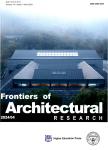Applying the electroforming process to bio-inspired architecture: The case of Castelbuono Estate Winery
Applying the electroforming process to bio-inspired architecture: The case of Castelbuono Estate Winery作者机构:Department of Industrial Engineering University of Trento Trento 38123 Italy Ferrari F.lli Lunelli spa via del Ponte di Ravina 15 Trento 30123 Italy
出 版 物:《Frontiers of Architectural Research》 (建筑学研究前沿(英文版))
年 卷 期:2013年第2卷第4期
页 面:435-444页
核心收录:
学科分类:08[工学] 0813[工学-建筑学] 0814[工学-土木工程] 0822[工学-轻工技术与工程]
主 题:Bio-inspired architec-ture Biomorphic structure Artistic design Copper electroforming
摘 要:Inaugurated in June 2012, the Carapace at Castelbuono Estate Winery in Italy is a highly interesting example of biomorphic architecture. The structure, an artistic creation of world-renowned sculptor Arnatdo Pomodoro, is reminiscent of a tortoise shell that conveys a sense of protection: the Carapace structure guards wine barriques in the same way that the tortoise carapace protects the animal. Zoomorphic aspects are further exhibited by symbots on the roof, which remind observers of cuttlefish bone, a recurring element in the artistic production of Maestro Pomodoro. The roof was constructed by assembly of single copper plates with a rough surface in accordance with the design of the artist. Therefore, determining the appropriate production process was crucial. Etectroforming was selected as the method to achieve a challenging architectural goal.



